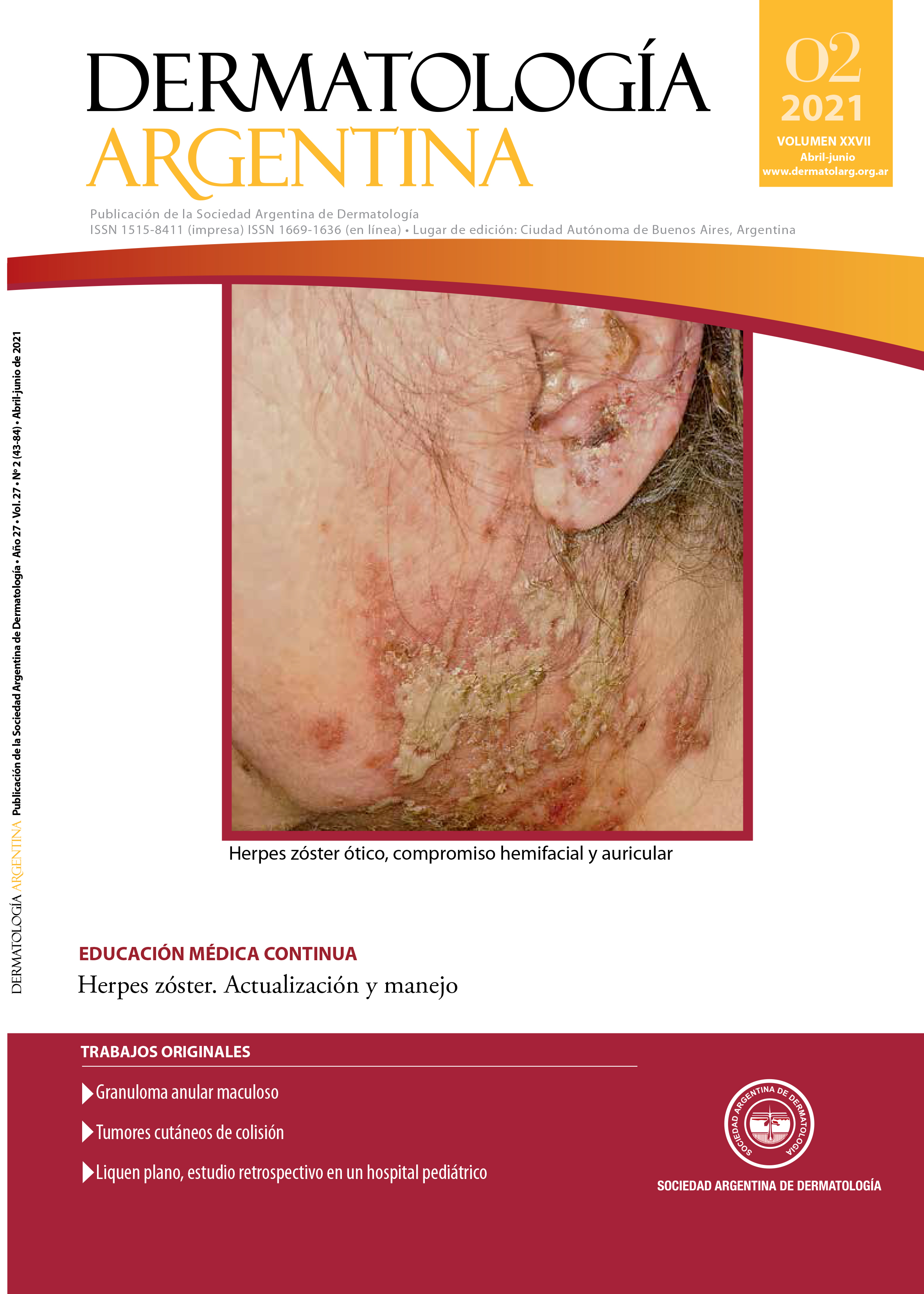Chronic nodular prurigo
DOI:
https://doi.org/10.47196/da.v27i2.2077Keywords:
nodular prurigo, pruritusAbstract
Chronic prurigo nodularis is characterized by a cycle of itching and excoriation involving neurodermal mechanisms, associated with various diseases. It manifests with cupuliform hyperkeratotic plaques or nodules. Treatment is focused on reducing itching and is a challengue due to the frequent resistance to the usual therapies.
We present the case of a 72-year-old man with a psychiatric history, who presented a recalcitrant pruritic dermatosis refractory to multiple treatment regimens.
References
I. Serra-García L, Morgado-Carrasco D. Prurigo nodular. Piel (Barc). 2020;35:563-576.
II. Fostini A, Girolomoni G, Tessari G. Prurigo nodularis: an update on etiopathogenesis and therapy. J Dermatolog Treat, 2013;24:458-462.
III. Kowalski E, Kneiber D, Valdebran M, et ál. Treatment-resistant prurigo nodularis: challenges and solutions. Clin Cosmet Investig Dermatol 2019;12:163-172.
IV. Carreras C, Aguirre G, Rayan M, et ál. Dermatosis provocadas por desórdenes psiquiátricos. Estudio retrospectivo de 48 pacientes. Dermatol Argent. 2013;19:194-197.
V. Giura MT, Viola R, Fierro M, et ál. Efficacy of dupilumab in prurigonodularis in elderly patient. Dermatol Ther 2020;33:1-3.
VI. Kwon C, Khanna R, Williams K, et ál. Diagnostic workup and evaluation of patients with prurigo nodularis. Medicines 2019;6:97.
VII. Stander HF, Elmariah S, Zeidler C, et ál. Diagnostic and treatment algorithm for chronic nodular prurigo. J Am Acad Dermatol 2020;82:460-468.
VIII. Grønlund J, Agner T, Sand C, Thomsen S. Dupilumab for prurigo nodularis: Case series and review of the literature. Dermatol Ther. 2020;33:e13222.
IX. Ständer S, Kwon P, Hirman J, et ál. Serlopitant reduced pruritus in patients with prurigo nodularis in a phase 2, randomized, placebo-controlled trial. J Am Acad Dermatol. 2019;80:1395-1402.
X. Ständer S, Yosipovitch G, Legat F, et ál. Trial of Nemolizumab in moderate-to-severe prurigo nodularis. N Engl J Med. 2020;382:706-716.
Downloads
Published
Issue
Section
License
Copyright (c) 2021 Dermatología Argentina

This work is licensed under a Creative Commons Attribution-NonCommercial-NoDerivatives 4.0 International License.
El/los autor/es tranfieren todos los derechos de autor del manuscrito arriba mencionado a Dermatología Argentina en el caso de que el trabajo sea publicado. El/los autor/es declaran que el artículo es original, que no infringe ningún derecho de propiedad intelectual u otros derechos de terceros, que no se encuentra bajo consideración de otra revista y que no ha sido previamente publicado.
Le solicitamos haga click aquí para imprimir, firmar y enviar por correo postal la transferencia de los derechos de autor



















